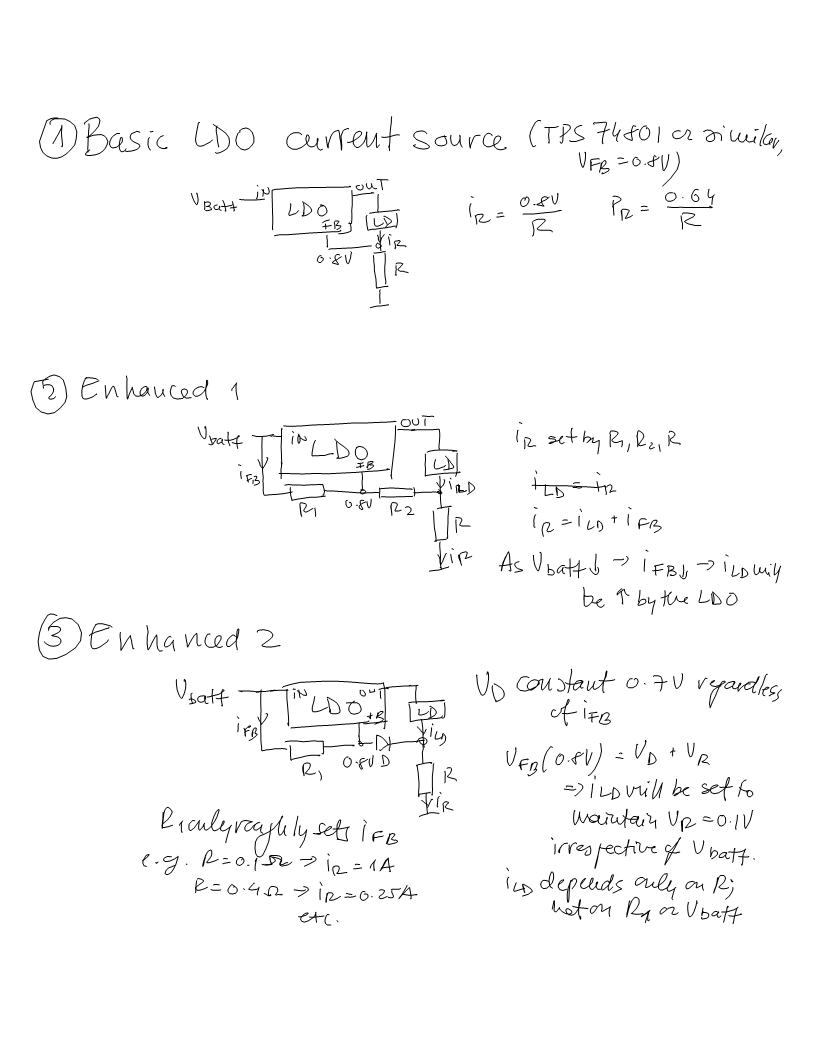I am trying to redo a certain application for greater battery efficiency. One of the steps I'm considering is using LDOs instead of the "normal" linear regulators.
This particular application uses a LM317 in constant current source configuration, with a resistor between Vout and ADJ to set the current and the load between ADJ and GND. The current requirements are on the order of 0.8-1.3A, selectable by switching the R.
Now I understand a LDO will not be a drop-in replacement in this application. However, would something like this work: a TPS78601 will have a constant 1.225V between FB and GND (as opposed to LM317 which has the reference voltage between ADJ and OUT). If FB is tied to OUT, the TPS78601 becomes a 1.225V regulator. A resistor R between OUT/FB and GND will set the output current. A load present between the GND of the LDO and the negative pole of the supply will see this constant current (plus the supply current of the LDO, which is a few hundred microamps).
Would this work? I am trying to keep things as simple as possible with this project.


